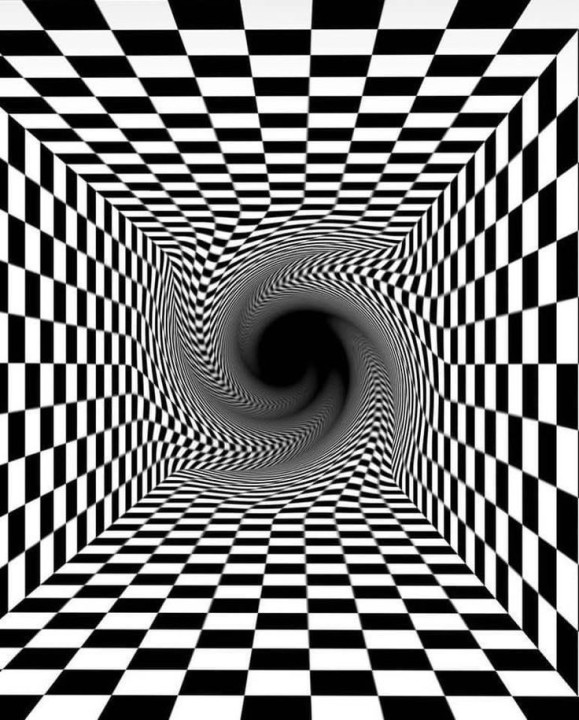
What is Optical art ?
It’s an art movement that emerged in the 1950s.
Optical art or Op art is a style of visual art that uses optical illusions.
Op artworks are abstract, with many pieces created in black and white. Typically, they give the viewer the impression of movement, hidden images, flashing and vibrating patterns, or warping.
The characteristics of op art are:
- It uses simple geometric figures that together form more complex figures.
- All the works made are static and have no real movement.
The Op Art's main objective is to make several visual effects that simulate movement.
It is the kind of art to play games with how our brains interpret the information our eyes are giving us.
Op artists try to use colors, shapes, and patterns to create images that look as if they are moving or blurring, playing tricks on the viewer.
Also, Op compositions create a sort of visual tension in the people’s mind that gives works the illusion of movement.
There was a time when meanings were focused and reality could be fixed; when that sort of belief disappeared, things became uncertain and open to interpretation. ~Bridget Riley.
Victor Vasarely was a Hungarian-French Op who was considered to be the creator of the earliest examples of Op art.
Bridget Riley is an English painter who is one of the foremost proponents of the 1960s Op art movement.
Can optical art relieve or cure certain mental illnesses?
This question aroused the curiosity of artist Youri Messen-Jaschin after noticing peculiar effects on some people appreciating his art. He initiated a book project combining optical art and scientific research to which our group leader Noémie Combe contributed a mathematical point of view on optical illusions.
The optical art of Yuri Messen-Jaschin and scientific research are combined in this abundantly illustrated book (L'Op Art rencontre les neurosciences - edited by Favre in French) ), which aims to question the influence of art on our brain. Can optical art alleviate or even cure certain psychological illnesses? This question aroused the curiosity of the artist Youri Messen-Jaschin since he noticed the more or less violent symptoms - such as dizziness, migraines or seasickness - produced by his works in some people.
The book also addresses the mathematical theory of optical art through the pen of Noémie Combe. She wrote a chapter called “Frontiers of reality and imagination: when the brain is tricked” analyzing how the geometry and colors of the figures could possibly impact our perception of (curved) space-time.
The project is mainly supported by Professor Bogdan Draganski, formerly at the Max-Planck Institute for Human Cognitive and Brain Sciences in Leipzig and now at the Centre hospitalier universitaire Vaudois in Lausanne, and Sigita Cinciute from the University of Vilnius. Using magnetic resonance imaging, they observed the brain activity of volunteers while works of art created especially for the study were projected in front of their eyes.
This illustrated book presents optical art and more particularly the work of Youri Messen-Jaschin. It also recounts the adventure of this extraordinary research, which could well contribute to blurring the line between art and science.